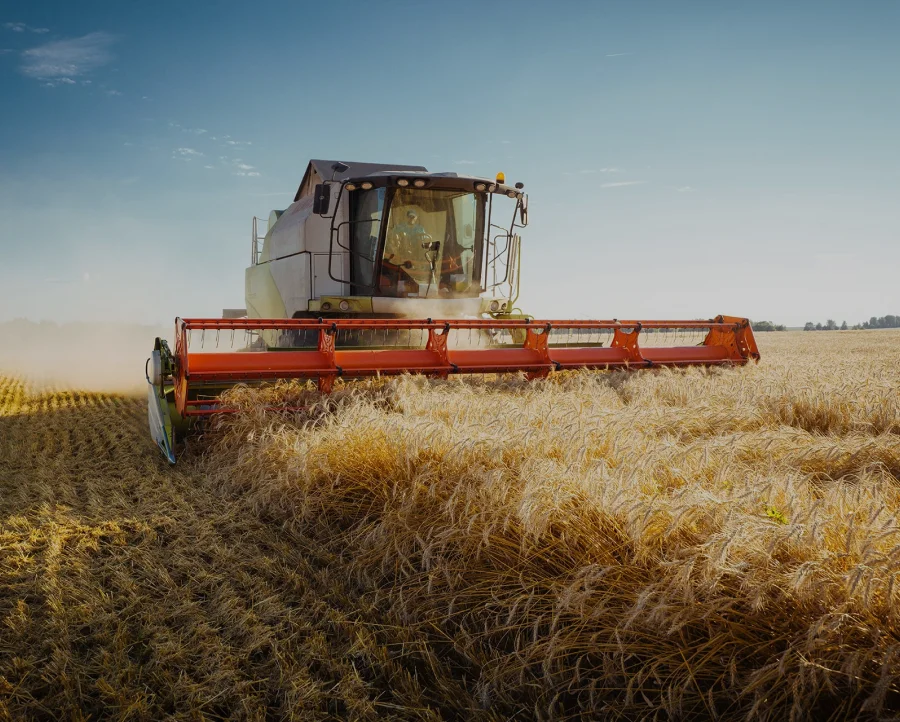With the global population predicted to grow up to nine billion by 2035, the amount of food required to match this population surge is also expected to rise by 25%. Current food systems are already working at maximum capacity and are ill-equipped to cope with this added pressure.
So, what is the optimal solution to this problem? The answer lies in alternative agriculture.
Alternative agriculture offers a holistic approach to sustainable farming. It takes into account the situation across the entire farm, including socioeconomic and environmental factors to deliver the most profitable and eco-friendly approach for long-term benefit.
Alternative agriculture systems are organic systems that involve all the components of a farm, from the crops to the terrain, animals, and even the workers. Because of this, alternative agriculture is an approach that can be adapted to any type of farm, be it a crop farm or animal farm. Software like AgriERP can help you establish alternative agriculture systems in your farm operations.
What is Alternative Agriculture?
Alternative agriculture essentially refers to agricultural systems that differ from conventional farming techniques that can be energy and resource exhausting.
The main aim of practicing alternative agriculture is to provide a healthy and consistent supply of food for the rapidly increasing human population while implementing sustainable and environmentally friendly farming techniques that are not input extensive.
Alternative farming methods are diverse and can be practiced on any farm, regardless of its size and terrain. For example, these methods can be implemented on local, non-industrial farms, SMEs (small and medium enterprises), large-scale, business farms, urban farms, and even hydroponic and aquaponic farms.
Alternative agriculture is built upon the principles of agroecology. This essentially means that you adopt farming methods that are sustainable and focus on producing more food from fewer resources.
Alternative agriculture is an amalgamation of multiple farming systems like organic agriculture, sustainable agriculture, integrated agriculture, agroforestry, and permanent agriculture. All of these systems focus on protecting the environment by minimizing extensive drainage of natural resources and excessive use of chemicals like fertilizers. Alternative agriculture is in sync with natural cycles, like the nitrogen and carbon cycles so that farming can be planned based on factors like soil fertility or the amount of rainfall.
Compliance with natural cycles is achieved through techniques like crop rotation, growing cover crops, and forgoing tillage. By linking farm operations with nature, alternate agriculture ensures that the environment is preserved, biodiversity maintained and local wildlife protected.
What is the Importance of Alternative Agriculture?
Rapid improvements in agricultural efficiency and productivity in the past 50 years have been input-intensive.
This approach has led to excessive consumption of limited resources, damage to wildlife and landscape, and a disruption of ecosystems due to decreased biodiversity. Alternative agriculture is a vital agricultural system because it aims to change this.
Alternative agriculture allows farming to be practiced in a way that preserves the environment. At the same time, it ensures that food production is maximized to match its increasing demand. This makes it one of the best solutions to the global food shortage phenomena as well as a guaranteed way to safeguard the planet and its resources.
Alternative agriculture systems not only promote biodiversity but also diversify the types of foods farmers can grow so that we are better equipped to survive any potential food shortages.
The methods are highly customizable because of the integration of multiple farming systems (as discussed above).
This means that land previously considered infertile can also be cultivated by adopting alternative agriculture techniques. Urban areas and terrain that were previously under-utilized can all be used when the correct method is applied.
Moreover, alternative agriculture is also an extremely profitable approach. It generates up to 13 jobs for every 1 million dollars invested as revenue. This is a huge difference compared to the mere 3 jobs industrial agriculture generated for every 1-million-dollar revenue.
Since alternative agriculture incorporates systems like organic ad sustainable farming, the end-products are much healthier options than industrial-farm food items. So, not only does this approach ensure an increased quantity of food, but it also makes for superior quality food products.
What are some Alternative Agriculture Practices?
Alternative agriculture practices involve all those practices that are not a part of conventional farming. These techniques are a part of systems like organic agriculture, integrated agriculture, and sustainable agriculture.
We have compiled a list of 6 key alternative agriculture practices.
1. Crop Rotation
Crop rotation is the practice of growing different types of crops on the same plot of land to preserve nutrients of the soil and prevent its exhaustion.
A diverse crop rotation can enhance and maintain soil fertility as well as reduce the impact of weeds, pests, and diseases by interrupting pest and disease life cycles.
Pros
- Improves soil quality
- Better soil structure
- Prevents water loss
- Increases crops yield in the long run
- Protects against weeds and pets
- Reduces need for fertilizers and pesticides
- Increases diversification
- Reduces risk of soil erosion
Cons
- Significant initial investments
- Crop rotation implies the need for a higher number of machines
- Experience needed for work
- Unexpected weather conditions may destroy sensitive plants
2. Soil Cultivation
This focuses on maintaining soil structure, stability, and fertility.
Farm soil mapping and analysis are part of soil cultivation. Soil includes Ph tests, measurement of lime requirement, and verifying the number of minerals like calcium, phosphorus, and potassium that are already present in the soil.
Soil cultivation also includes identifying the risks of erosion by wind or water to minimize them. These preventive measures include growing grass between crops or planting specific erosion breaks.
Soil structure is heavily influenced by tractor size, tire pressure, and cultivation technique, and timing. It is ideal to alternate plowing and non-inversion cultivation techniques in rotation. This is because non-inversion cultivation requires less energy and does less damage to soil compared to plowing. However, plowing is more effective in destroying weeds. Thus, alternating these two techniques is ideal.
Pros
- Breaks up the compacted soil particles
- Prevents soil from eroding
- Makes sprouting of new seeds from soil surface easier
- Incorporates air and organic matter into soil
- Aids pest elimination
Cons
- Increases chances of soil compaction due to erosion
- Leads to excess water loss through soil
- Increases chances of dormant weeds germinating
3. Crop Nutrition
Crop nutrition involves a fertilization plan designed to match the major nutrients required by the growing crops. It also includes regular soil analysis to determine the nutrients available in the soil.
Alternative agriculture focuses on being in sync with natural cycles so that it can take advantage of soil at its maximum fertility. Natural fertilizers used are manure and compost from previous crops. These are incorporated into the nitrogen and carbon cycles.
Pros
- Multiple harvests per year may be possible
- Rapid effect on crops
- Fulfill all nutritional requirements
- Ensure high yield
- Manure is water-soluble and can easily dissolve in soil
- Replace nutrients used up by soil
Cons
- Groundwater pollution
- Excess can damage surrounding flora and fauna and decrease biodiversity
- They may not be sufficient in quantity to meet a large farm’s needs
4. Crop Protection
Crop protection includes protecting crops from weeds, pests, and diseases.
Prevention through crop rotation and choice of crops being grown is the first line of defense. The second line consists of weed mapping, disease or pest forecasts, and the use of diagnostic kits.
The last stage consists of control through insecticides and pesticides.
Alternative agriculture focuses on crop rotation so that the use of chemicals like insecticides and pesticides can be forgone as much as possible.
Pros
- Help control insects, diseases, weeds, and other pests
- May improve the growth behavior of plants
- May increase yield
Cons
- Implementing crop rotation requires knowledge and technique
- Improper crop rotation techniques can cause more harm to the soil than the benefit they bring
5. Wildlife and Landscape Management
Alternative agriculture takes into account the terrain and natural flora and fauna so that the least invasive farming techniques can be implemented. This is done to conserve a certain degree of biodiversity.
The landscape is also managed by preserving wooded areas, ponds, and streams in the farmland.
Pros
- Prevent weeds and fungi from growing
- Conserve and increase biodiversity
Cons
- The process may be expensive
- An expert may need to be hired
6. Energy Resources
Energy resources include the type of energy used to fuel the farm operations. These energy sources can be renewable, which include wind or solar power, or non-renewable, which includes fossil fuels.
Alternative agriculture aims to make energy use as efficient as possible. It prioritizes exploring renewable energy options and saving energy through in-depth analysis of farm operations to determine the proportion of fuel spent on each level.
Energy resources also include waste disposal, with the primary aim being to recycle a maximum amount of material.
Prevention of farmland by pollution due to over usage of insecticides, pesticides, and fertilizers is also included.
Pros (of renewable energy)
- It generates no emission
- Sustainable
- Decreases carbon footprint
- Reduces air pollution
- Combats climate change
Cons (of renewable energy)
- It may be unreliable
- It is expensive
- Requires a huge upfront capital
- Needs a lot of area for installation
- Expensive costs of storing
Conclusion
Alternative agriculture focuses on adopting sustainable farming techniques so that global food production can increase in a way that does threaten the planet.
Adopting this relatively new, unconventional method of farming is an all-in-one solution to our food problem and our environmental issue. Its flexibility and customizability make alternative agriculture such an optimum approach.
Whatever type of farm you, alternative agriculture offers an excellent holistic approach to farming that enables you to generate a steady, healthy supply of food through a sustainable and eco-friendly method.









